Many customers live for the moment of getting the perfect pizza—and it’s only possible if pizzerias use the right pizza machine. So, retailers looking to stock commercial pizza machines should choose with caution. Typically, one would have to sift through many features and considerations, which can feel overwhelming quickly. But don’t worry. This article will guide retailers through everything they need to know before adding pizza machines to their catalogs in 2025.
Table of Contents
A quick look at the pizza machine market
The types of pizza machines on the market
Everything retailers should know before stocking pizza machines
Last words
A quick look at the pizza machine market
The commercial pizza oven market has grown considerably in recent years, with sales fueled by the steady expansion of pizza’s popularity worldwide. According to industry reports, the global market size for commercial pizza machines will be US$ 1.92 billion in 2024 and US$ 3.67 billion by 2037, growing at a 5.1% compound annual growth rate (CAGR).
The growing variety of pizza styles also drives this demand. Neapolitan, New York-style, and deep-dish pizzas require different cooking techniques and times, meaning that pizzerias invest in ovens suited to each. Additionally, Europe holds the largest share (35%) in the pizza machine market, while APAC follows closely behind with a 28% revenue share.
The types of pizza machines on the market
1. Conveyor pizza machines
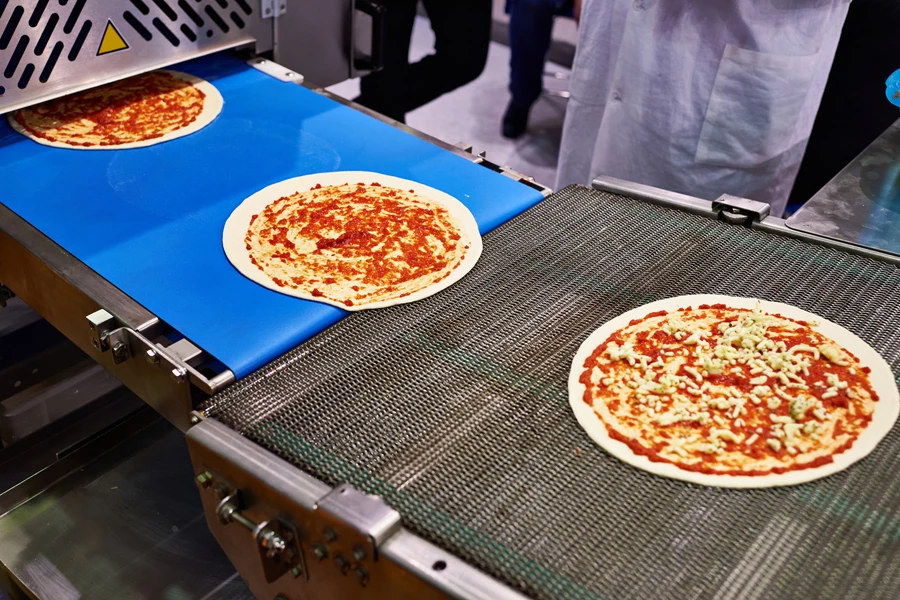
Perfect for high-traffic locations, these ovens continuously bake pizzas as they pass through on a conveyor belt, ensuring consistent results. A good example is the Lincoln 2500 Series, which can bake up to 80 16-inch pizzas an hour and requires minimal oversight, making it a go-to for chains and large kitchens.
2. Gas-powered pizza machines
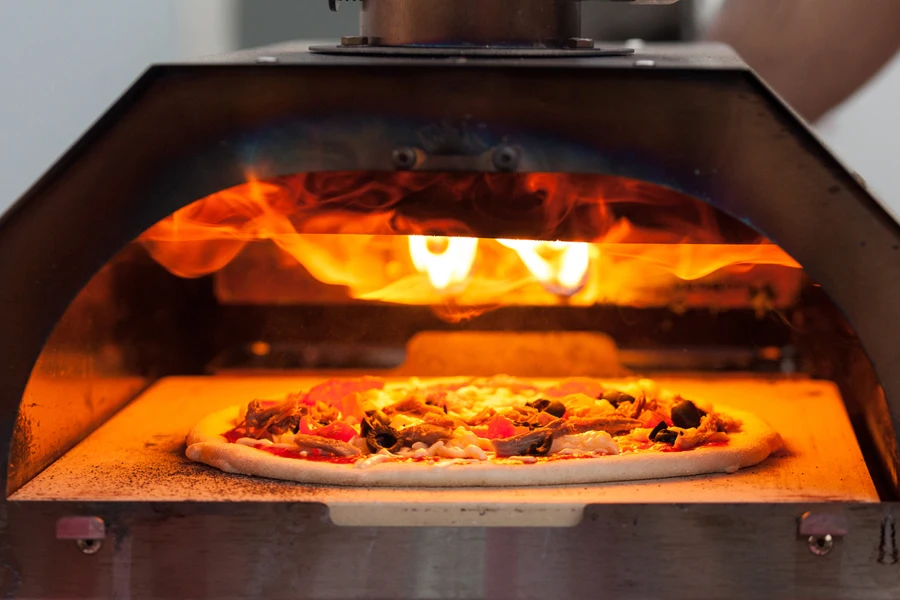
Gas models heat up fast and are highly energy-efficient, making them perfect for restaurants with heavy pizza orders. For example, the Bakers Pride Y-600 offers the consistency of gas-powered heat with a stone hearth for a crisp crust.
3. Wood-fired pizza machines

For an authentic touch, wood-fired pizza machines like those by Mugnaini offer that traditional smoky flavor. While they take more expertise to operate and maintain, many pizzerias consider the unique flavor and ambiance worth it. Be mindful that wood-fired ovens might not be permitted in all areas due to emissions.
4. Electric pizza ovens
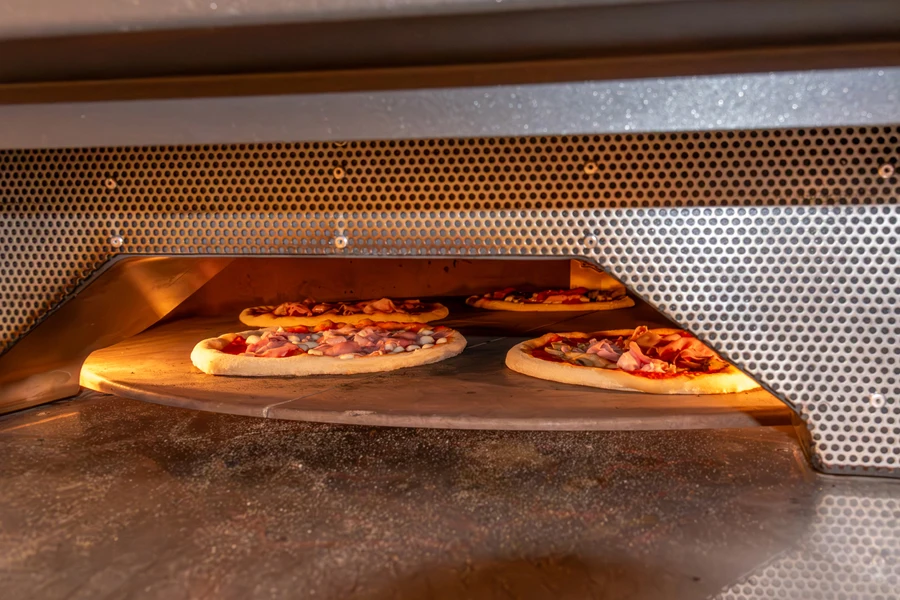
These are generally easier to install and operate than gas ovens and are suitable for most locations. The TurboChef Fire Oven, for instance, is a compact yet powerful electric model that can bake a Neapolitan pizza in under two minutes, making it perfect for fast-paced urban pizzerias.
Everything retailers should know before stocking pizza machines
1. Size and capacity
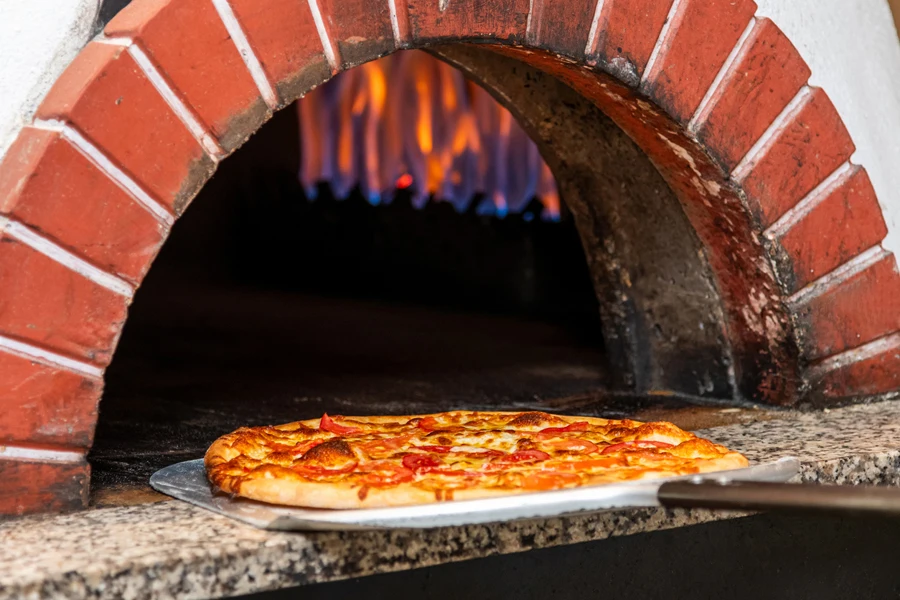
The first consideration in any commercial kitchen is space. Pizza machines come in various sizes, from compact countertop models to large, industrial-size ovens that can dominate a kitchen. A large order chain might look for conveyor pizza ovens that can handle a lot of pizzas per hour with minimal supervision.
But smaller options, like a countertop pizza oven with a 3-pizza capacity, will be a better deal for small, cozy pizzerias or new startups. So, always assess the target customers’ needs: If they’re running a family-owned spot with a few tables, a larger conveyor machine may be overkill, while a small deck oven could be ideal.
2. Heat distribution and temperature control
Consistent, even heat distribution is key to crafting that ideal crust. A high-temperature oven should offer precise temperature control settings, enabling chefs to adjust it to a preferred degree. This control can be vital for pizzas that need an extra crispy finish or a soft crust dough.
Consider heat recovery time as well—this is how quickly an oven returns to the desired temperature after users open it. Pizza machines with solid heat retention can handle higher customer demand without sacrificing quality. A great model can feature dual heating elements that offer this quick recovery, keeping orders on track during busy hours.
3. Energy efficiency
A pizza maker shouldn’t add to high energy costs. For this reason, energy efficiency is a top priority for many. Hence, retailers should focus on products that offer energy-saving modes or power conservation features—they can significantly reduce monthly bills.
Electric pizza machines, in particular, have come a long way, often featuring insulated exteriors and multi-layered chambers that use less energy to maintain consistent heat. Gas-powered models can also be more energy-efficient in regions with higher electricity costs. Gas ovens typically heat up quickly and can be less expensive to operate long-term, though they require a gas line hookup.
4. Customization and aesthetics
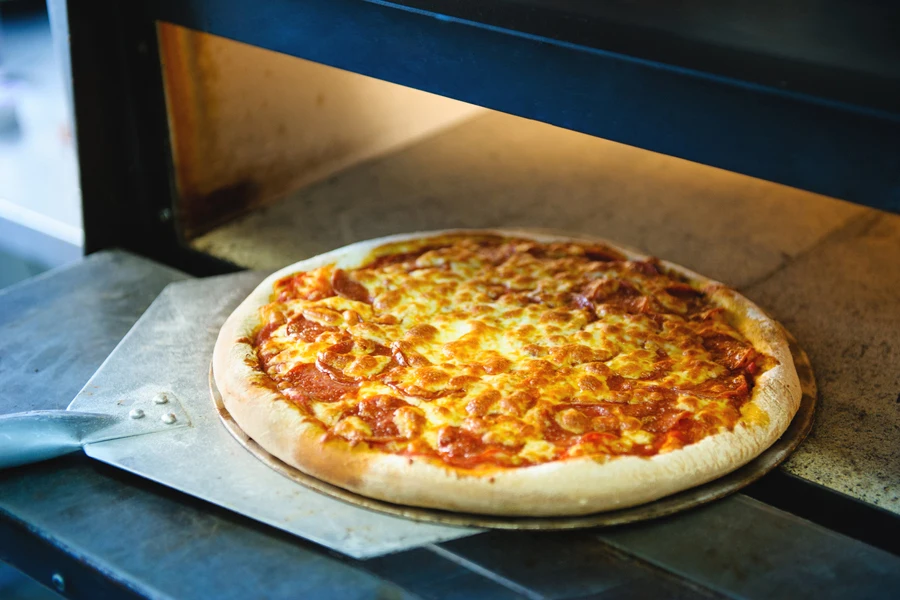
While function is crucial, aesthetics also matter. Pizzerias often operate with open kitchens, and a sleek, stainless-steel oven can add a professional and attractive vibe to the restaurant. Some manufacturers offer custom finishes or logos, allowing pizzerias to match their decor or brand.
5. Easy-to-clean features
Pizza ovens can get messy fast, making ease of cleaning a major priority. Some high-end models offer self-cleaning features, where intense heat settings can burn off the residue, requiring only a quick wipe-down afterward. However, more affordable models without self-cleaning should have removable crumb trays, non-stick surfaces, and simple designs without tight crevices or complex components.
6. Material quality
Material quality affects everything from heat retention to cleaning and durability. High-quality pizza machines typically feature ceramic or cordierite stones that retain and evenly distribute heat. A good example is a pizza oven with high-density refractory materials that ensure long-lasting performance and reliable heat distribution.
Stainless steel is the best option for exterior quality, especially in fast-paced kitchens where the equipment will endure frequent use. Insulated doors, too, help maintain interior heat without taxing the machine’s energy.
7. Maintenance and durability
Quality pizza machines are quite durable, but only because they have the proper materials and maintenance features. After all, getting one is a significant investment, so buyers will want something worth their money, which won’t happen if it breaks down after a few orders.
Retailers should look for models with stainless steel exteriors and durable components, as these resist rust and wear. The Roccbox by Gozney is a great example. The brand built it with stainless steel and reinforced insulation, making it durable indoors and outdoors.
Maintenance-wise, easy-access panels can be a big selling point for busy kitchens. If a machine requires frequent servicing, it should have easy-to-reach and maintain parts, saving downtime and labor costs. Offering models with a reputation for durability can mean fewer service calls and higher satisfaction.
Last words
Pizzerias need the right pizza machines to craft the most memorable experience for their customers. From durable, energy-efficient models to wood-fired machines that bring authentic flavor, offering the right options will help satisfy the target audience’s needs—and make more sales.
Remember to consider everything discussed above. Factor in size and capacity, heat distribution/temperature control, energy efficiency, customization/aesthetics, easy-to-clean features, and material quality. These will help retailers make an informed decision when adding pizza ovens to their stock in 2025.



